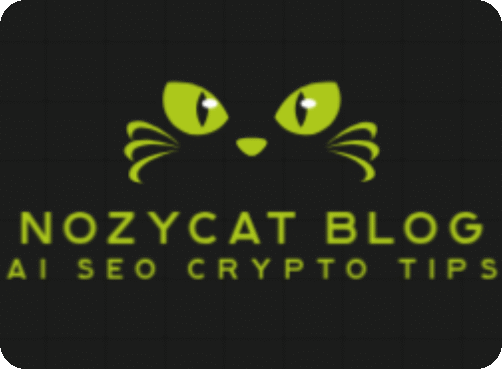Technology innovations have evolved a lot in the past few years with the effect of changing our life and habits. And by tech I mean the devices that are working on collecting data and using data like computers and mobiles as well as the home devices that connect automatically and perform tasks. People are becoming more and more productive and more comfortable too. Using automated devices makes your task easier. Things are still in the test phase and will soon get in real life, but people are so excited to try it.
Thank you for reading this post, don’t forget to subscribe!
Please support the blog by clicking ads and join the monetize programs , coming soon.
Gig workers are no exception to that, and they get the comfort of work anywhere and a flexible time schedule. The gig life has some considerations and arrangements to keep in mind too. Below are short points about the obligations and tasks of the gig worker to be able to stay in the flow.
Tasks and responsibilities of a gig worker
Every worker in the gig market has a definite list of tasks, and that list is much bigger and detailed than the usual full time or part time employees. It includes his benefits and bills and so on. Every worker in the freelance and gig market has to, in order to survive the time, organize the expenses and take care of himself and his work station regularly.
Following are some of the important checklists to consider in planning gig worker day.
Okay, let’s break down the key responsibilities and important tasks common to most gig and freelance workers. While the specific type of work (e.g., writing, driving, designing, delivering, consulting) dictates the exact nature of the core service, many underlying responsibilities are shared due to their independent status.
Finding & Securing Work (Business Development):
- Prospecting: Actively searching for new projects, clients, or gigs (using platforms, networking, direct outreach).
- Marketing & Self-Promotion: Creating and maintaining portfolios, profiles (on platforms like Upwork, Fiverr, LinkedIn), or personal websites. Showcasing skills and past work.
- Bidding & Quoting: Understanding project requirements, estimating effort, setting competitive rates, and writing proposals or bids.
- Negotiating: Discussing scope, timelines, deliverables, and payment terms with clients.2
Executing the Work (Service Delivery):
- Performing the Core Task: Delivering the actual service to a high standard – whether it’s writing code, designing graphics, delivering food, providing transportation, completing a consulting report, etc.
- Meeting Deadlines: Managing time effectively to complete work within agreed-upon schedules.
- Ensuring Quality: Maintaining a high level of quality and professionalism in the work delivered. Adhering to project specifications and client requirements.
Client/Customer Management:
- Communication: Maintaining clear, professional, and timely communication with clients or customers (updates, questions, clarifications).
- Setting Expectations: Clearly defining scope, deliverables, timelines, and communication methods upfront.
- Managing Feedback: Receiving, processing, and acting upon client feedback (positive or negative). Handling revisions if applicable.
- Building Relationships: Fostering positive relationships for potential repeat business or referrals.
Financial Administration:
- Setting Rates: Determining appropriate pricing for services (hourly, per project, per gig).
- Invoicing: Creating and sending invoices accurately and promptly.
- Payment Follow-up: Tracking payments and following up on overdue invoices.
- Expense Tracking: Keeping meticulous records of business-related expenses for tax purposes (software, supplies, mileage, home office costs, etc.).
- Tax Compliance: Understanding and fulfilling tax obligations. This is a major responsibility – setting aside money for income tax and self-employment taxes (like Social Security and Medicare in the US), and potentially paying quarterly estimated taxes.
- Budgeting: Managing variable income and budgeting for both business and personal expenses.
Self-Management & Productivity:
- Time Management: Structuring their workday/week, prioritizing tasks, and managing their own schedule without direct supervision.
- Organization: Keeping track of multiple projects, clients, deadlines, and administrative tasks.
- Motivation & Discipline: Staying focused and productive, especially when working remotely or with flexible hours.
- Work Environment: Setting up and maintaining an appropriate workspace and necessary tools (computer, software, vehicle for drivers, etc.).
Legal & Compliance:
- Understanding Contracts: Reading and understanding service agreements, contracts, or platform terms of service.
- Compliance: Adhering to relevant industry regulations or platform rules.
- Data Privacy/Security: Handling client or customer data responsibly and securely, if applicable.
- Insurance (Often): Determining and obtaining necessary insurance (liability, professional indemnity, vehicle insurance for drivers).
Skill Maintenance & Development:
- Staying Current: Keeping skills up-to-date within their field.
- Learning New Tools: Adapting to new software, platforms, or technologies relevant to their work.
- Continuous Improvement: Seeking ways to improve their service quality and efficiency.
In essence, gig and freelance workers are entrepreneurs running a business of one. They are responsible not just for doing the work, but also for all the surrounding tasks required to find, manage, bill for, and legally comply with that work – tasks often handled by separate departments (Sales, HR, Finance, Legal) in a traditional company.
Level Up Your Gig: How Tech Innovations are Empowering Today’s Gig Workers
The gig economy has fundamentally reshaped the landscape of work, offering flexibility and autonomy previously unavailable to many. From freelance creatives and consultants to ride-share drivers and delivery personnel, millions rely on short-term contracts or freelance work. While this model offers freedom, it also presents unique challenges: finding consistent work, managing unpredictable schedules, handling logistics, ensuring timely payments, and maintaining safety.
Fortunately, technology isn’t just the enabler of the gig economy through platforms; it’s also continuously evolving to provide innovative tools that streamline daily tasks and empower gig workers. Let’s dive into some key areas where tech is making a tangible difference.
1. Intelligent Matching & Opportunity Discovery
- The Challenge: Finding the right gigs consistently.
- The Tech Solution: Beyond simple job boards, platforms leverage sophisticated algorithms.
- Machine Learning (ML) Matching: Platforms like Upwork, Fiverr, Uber, and DoorDash use ML to analyze worker profiles, skills, past performance, location, and availability, matching them with relevant client needs or customer requests in real-time. This goes beyond keywords, understanding nuances and preferences.
- Real-time Notifications & Geo-fencing: Delivery and ride-share apps use location services and push notifications to alert workers to nearby opportunities instantly, minimizing downtime. Geo-fencing can trigger alerts when a worker enters a high-demand area.
- Predictive Demand: Some platforms use historical data and AI to predict demand surges, allowing workers to position themselves strategically for more work.
2. Optimized Logistics & Navigation
- The Challenge: Efficiently navigating routes, managing deliveries, and minimizing travel time/costs.
- The Tech Solution: Advanced mapping and route optimization are crucial.
- Real-time GPS & Traffic Data: Integrated apps (like Google Maps, Waze, or proprietary platform maps) provide turn-by-turn directions optimized for current traffic conditions, accidents, and road closures.
- Multi-stop Route Optimization: For delivery workers, algorithms calculate the most efficient sequence for multiple drop-offs, saving significant time and fuel. This often involves solving complex variations of the “Traveling Salesperson Problem” (TSP).
- ETA Calculation & Communication: Accurate Estimated Times of Arrival (ETAs) are automatically calculated and communicated to customers/clients, improving service quality and managing expectations.
3. Seamless Communication & Collaboration
- The Challenge: Maintaining clear and efficient communication with platforms, clients, and customers without cumbersome back-and-forth.
- The Tech Solution: Integrated communication tools are standard.
- In-App Messaging: Secure, logged messaging within platforms (like Airbnb, Uber, food delivery apps) keeps communication centralized and provides a record, often masking personal phone numbers for privacy.
- Project Management Platforms: Freelancers heavily rely on tools like Slack, Asana, Trello, and Jira to manage project timelines, deliverables, and client feedback asynchronously.
- Video Conferencing: Tools like Zoom, Google Meet, and Microsoft Teams are essential for remote freelancers for client meetings, interviews, and collaborative sessions.
4. Streamlined Payments & Financial Management
- The Challenge: Ensuring quick, reliable payments and managing irregular income streams.
- The Tech Solution: Fintech integrations simplify financial life.
- Digital Wallets & Instant Payouts: Platforms often integrate with payment gateways (Stripe, PayPal) or offer their own digital wallets, enabling faster, sometimes instant, access to earnings after completing a gig.
- Automated Invoicing: Freelance platforms and dedicated accounting software (like QuickBooks Self-Employed, FreshBooks) automate invoice creation and tracking.
- Expense Tracking & Tax Tools: Apps can automatically track mileage (using GPS), categorize expenses by linking to bank accounts, and estimate quarterly tax obligations – a huge help for independent contractors.
5. Enhanced Safety & Security
- The Challenge: Ensuring personal safety when interacting with strangers or working in unfamiliar locations.
- The Tech Solution: Platforms are increasingly incorporating safety features.
- Location Sharing & Monitoring: Ride-share and delivery apps allow workers (and sometimes customers) to share trip progress in real-time with trusted contacts.
- Emergency Assistance Buttons: In-app SOS buttons can quickly connect workers to emergency services or the platform’s safety support team, often transmitting location data automatically.
- Identity Verification & Ratings: Two-way rating systems and identity verification processes aim to build trust and accountability for both workers and customers/clients.
- Anonymized Communication: Masking phone numbers protects personal information.
Looking Ahead: The Next Wave
The innovation doesn’t stop. We’re seeing the emergence of:
- AI for Personalized Guidance: AI assistants offering tips on maximizing earnings, suggesting optimal working hours based on predictive data, or even helping draft proposals.
- Wearable Tech Integrations: Smartwatches providing discreet notifications or hands-free communication.
- Blockchain for Smart Contracts: Potentially automating payment release upon verifiable completion of tasks defined in a smart contract.
Conclusion
Technology is more than just the backbone of the gig economy; it’s an active partner for the gig worker. From finding opportunities to navigating routes, managing finances, and staying safe, tech innovations are constantly evolving to address the unique challenges of gig work. By leveraging these tools effectively, gig workers can enhance their efficiency, increase their earning potential, and gain greater control over their independent careers. As technology continues to advance, its role in empowering and supporting the global gig workforce will only grow stronger.
More resources
- What Is Freelancing? Basics and Popular Jobs in 2025
- Freelancing Terminology Guide
- Time Management Strategies for Gig Economy Jobs.
- The Role of Gig Workers in Business Growth
- What Are the Benefits of Gig Economy Workers? | Expert360
- Find more about online work in the blog archives here.
Thanks for reading to here and wish you help and support by watching and click on ads links.






Leave a Reply